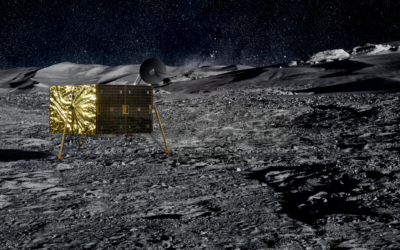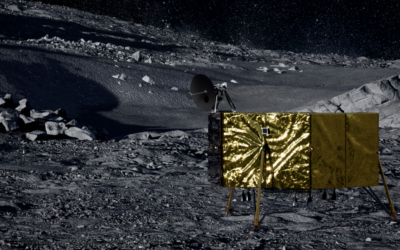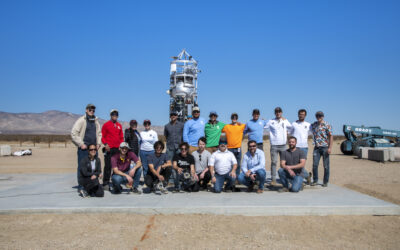NASA and Masten Space Systems announced the selection of two Tipping Point awards. The first is for Metal Oxidation Warming System (MOWS), being developed in partnership with Penn State as a chemical heating solution to help spacecraft survive in sunlight-deprived lunar environments. The second will drive completion of Masten’s state-of-the-art aerospace testbed, named Xogdor, to provide the industry an updated flight test analog for critical Artemis technologies.
“We are excited to see such an auspicious group of Tipping Point awards this year,” said Masten CEO Sean Mahoney. “It’s an honor to be in such great company with all these amazing awards as NASA’s forward-looking Space Technology Mission Directorate steps up to fund the companies who are producing innovations that will take America back to the Moon, to stay.”
Masten will mature MOWS, a lunar warming solution with electricity cogeneration that allows spacecraft systems to survive the lunar night and operate in shadowed regions. MOWS employs moderate-temperature chemical reactions for thermal control with order-of-magnitude greater specific energy than batteries. MOWS is useful for both robotic and manned missions, as both require thermal control for surface operations.
“MOWS technology benefits both NASA and commercial missions as it significantly expands the scope of lunar exploration,” said Matthew Kuhns, chief engineer at Masten. “The ability to survive the lunar night extends missions beyond the current capability of 14 days, allowing at least six weeks, and possibly longer, greatly increasing our capacity to perform more science, operate customer payloads, and reduce risk for future missions on the Moon.”
Masten will mature its Xogdor flight vehicle to provide an updated system for testing technologies in a flight environment. Over three years, Masten will complete the development and flight testing Xogdor. The effort will support risk reduction of technologies through flight testing in pursuit of NASA’s Moon-to-Mars campaign with a focus on building an EDL (Entry, Descent, Landing) test capability for near-term lunar missions. Xogdor will be the sixth vehicle in Masten’s line of reusable rockets, which have had more than 600 successful VTVL (Vertical Takeoff Vertical Landing) flights over 15 years of heritage.
“Xogdor is poised to become the industry’s state-of-the-art testing analog with performance capabilities far exceeding those currently available,” said Masten CTO, Dave Masten. “Through this partnership, Xogdor will test critical Artemis technologies, including hazard detection instruments, precision landing avionics, innovative flight software, Plume Surface Interaction (PSI) experiments, and other critical EDL experiments as early as 2023.”
“This is the most Tipping Point proposals NASA has selected at once and by far the largest collective award value,” said NASA’s Associate Administrator for Space Technology Jim Reuter. “We are excited to see our investments and collaborative partnerships bring about new technologies for the Moon and beyond while also benefiting the commercial sector.”
About Masten Space Systems
Masten Space Systems is enabling sustainable access and utilization of the Moon, Mars, and beyond. Founded in 2004, Masten has been building and flying reusable rockets for nearly two decades with the most successful rocket-powered landings in the industry. The company is now applying its terrestrial rocket experience to lunar missions that will accelerate space ecosystems and enable new commercial applications. Masten’s end-to-end mission solutions include everything from tech development and testing to off-Earth delivery and operations. Based in Mojave, California, Masten aims to unlock the value in space to benefit humans on Earth, starting with Masten Mission 1 to the lunar south pole.


